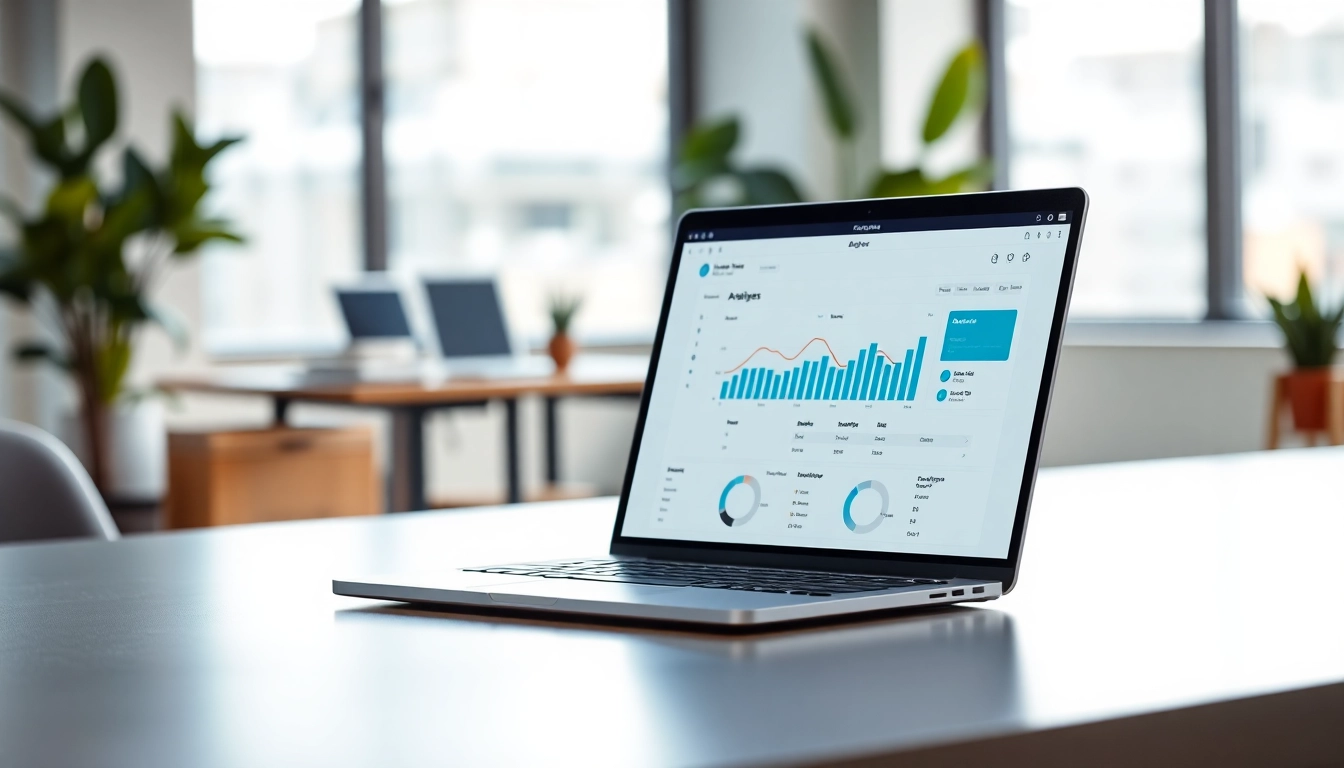
Understanding AI for Competitive Intelligence
In today’s fast-paced business environment, gaining a competitive edge requires more than just traditional marketing strategies. Companies are increasingly leveraging artificial intelligence (AI) to enhance their competitive intelligence efforts. AI for competitive intelligence encompasses various technologies that enable businesses to analyze market data, monitor competitor activities, and identify emerging trends more effectively than ever before. This article delves deep into the world of AI in competitive intelligence, exploring its benefits, popular tools, practical applications, challenges, and future trends.
What is Competitive Intelligence?
Competitive intelligence (CI) refers to the process of gathering and analyzing information about competitors to inform strategic business decisions. It involves tracking competitors’ products, market strategies, pricing, and performance to gain insights into their strengths and weaknesses. Unlike traditional market research, which may focus solely on customer feedback and market trends, competitive intelligence encompasses a broader range of information sources and analysis techniques.
CI is essential for companies seeking to stay ahead of the curve in their respective industries. By understanding competitors’ moves and anticipating changes in the market, businesses can make informed decisions about product development, marketing strategies, and even operational improvements.
The Role of AI in Modern Analysis
AI plays a pivotal role in modern competitive intelligence by automating data collection, enhancing analysis, and providing actionable insights. With the ability to process vast amounts of data quickly, AI can identify patterns and trends that may not be immediately apparent to human analysts.
Machine learning algorithms, for instance, can analyze historical data to predict future competitor behavior. Natural language processing (NLP) technologies can sift through news articles, social media posts, and market reports to extract relevant information and summarize findings. This not only saves time but also enhances the quality of insights derived from the data.
Benefits of Using AI for Competitive Insights
Integrating AI into competitive intelligence offers numerous advantages:
- Efficiency: AI can significantly speed up the data collection process, allowing CI teams to focus on analysis and strategy development rather than manual data entry and report generation.
- Accuracy: Automated systems reduce the risk of human error, ensuring that the information gathered is both reliable and up-to-date.
- Comprehensive Insights: AI can correlate data from multiple sources, providing a holistic view of the competitive landscape and enabling companies to make informed decisions.
- Real-Time Updates: Continuous monitoring of competitors allows businesses to adapt quickly to changes in the market, helping them to seize opportunities as they arise.
Key Tools and Platforms for AI-Driven Competitive Intelligence
Popular AI Tools Compared
With the rise of AI in competitive intelligence, several tools have emerged that cater to different aspects of CI. Here, we compare some of the leading options:
- Crayon: A comprehensive platform that provides real-time competitive monitoring across various channels. It helps businesses to stay informed about competitor moves and market trends.
- Kompyte: This tool utilizes AI to offer instant summaries and insights from competitor activities, including website changes and win/loss analyses.
- WatchMyCompetitor: Designed to deliver curated insights, this platform automates competitor tracking and analysis with the help of market analysts.
- AlphaSense: A market intelligence platform that leverages AI to sift through financial and business data, making it particularly useful for financial analysis of competitors.
- Sembly AI: This tool focuses on competitor analysis through the lens of AI, providing templates and examples to facilitate deeper insights.
Features to Look for in AI Platforms
When selecting an AI-driven competitive intelligence tool, consider the following features:
- Data Integration: The ability to integrate data from multiple sources, such as social media, news articles, and proprietary databases, is crucial for comprehensive analysis.
- Customizable Alerts: Look for platforms that offer customizable notifications to keep you updated on relevant competitor activities.
- Visualization Capabilities: Effective data visualization tools facilitate easier interpretation of complex data sets.
- User-Friendly Interface: A simple, intuitive user interface can significantly enhance user adoption and ease of use.
- Analytical Tools: Features such as sentiment analysis, predictive analytics, and competitive benchmarking can add value to your CI efforts.
Case Studies: Successful Implementations
Implementing AI in competitive intelligence has yielded significant benefits for many companies. For instance, a leading e-commerce platform successfully utilized AI-driven insights to enhance their product offerings. By analyzing competitor pricing strategies using AI tools, the company was able to adjust its pricing model in real-time, leading to a 15% increase in sales.
Another case involved a software company that used AI-enabled competitive intelligence to streamline their product development process. By understanding competitors’ features and customer feedback extracted through AI analysis, they modified their product roadmap, which resulted in quicker development timelines and more relevant features, ultimately enhancing user satisfaction.
Practical Applications of AI in Competitive Intelligence
Data Gathering and Monitoring
One of the most critical applications of AI is its ability to gather and monitor vast amounts of data effortlessly. By scraping the internet for competitor information, AI tools can compile data from various sources such as websites, press releases, and social media platforms. For example, tools like Crayon and WatchMyCompetitor automate this process, allowing businesses to receive updates continuously.
Automating Analysis and Reporting
AI also plays a pivotal role in automating analysis and reporting. Instead of manually sifting through data to extract relevant insights, AI algorithms can analyze large data sets and provide summarized reports. This not only saves time but also ensures that CI teams have access to the most pertinent information. Tools like Kompyte employ AI to generate synthesis reports automatically, making it easier for teams to stay informed without drowning in data.
Enhancing Decision-Making Processes
AI-driven insights foster better decision-making processes within organizations. By providing comprehensive and accurate analyses, businesses can develop data-backed strategies that are more likely to succeed in a competitive market. For instance, insights derived from AI can inform marketing strategies, product development, pricing structures, and sales tactics, ultimately leading to improved performance.
Challenges and Considerations in AI Adoption
Data Privacy and Ethical Issues
While AI presents significant opportunities, it also raises concerns regarding data privacy and ethical considerations. Organizations must ensure compliance with data protection regulations such as GDPR when collecting and analyzing competitor data. Transparency in data use and ethical guidelines should be established to maintain public trust.
Overcoming Resistance to Change
Implementing AI solutions often faces resistance from employees who may be concerned about job displacement or a steep learning curve. To overcome this resistance, companies should facilitate training programs that educate staff on the benefits of AI and how to work alongside these technologies effectively.
Cost-Benefit Analysis of AI Tools
Adopting AI for competitive intelligence can involve significant upfront costs. Businesses should conduct a thorough cost-benefit analysis to assess the potential return on investment (ROI) from implementing AI tools. Understanding the value of improved decision-making and operational efficiency is crucial in justifying investment in these technologies.
Future Trends in AI for Competitive Intelligence
Emerging Technologies and Innovations
The landscape of AI for competitive intelligence is constantly evolving. Emerging technologies such as advanced machine learning algorithms and enhanced data processing capabilities are likely to redefine how organizations approach CI. Innovations in AI, such as the development of more sophisticated predictive analytics and real-time sentiment analysis, will provide businesses with an even greater competitive edge.
Integration of AI with Other Business Strategies
As AI technologies continue to advance, their integration with other business strategies will become increasingly seamless. Combining AI-driven insights with sales strategies, marketing efforts, and product development will enable companies to create a holistic approach to competitive intelligence.
The Evolving Landscape of Market Intelligence
Market intelligence remains a critical component of business strategy, and AI will play a vital role in shaping its future. The ability to harness AI for competitive intelligence will transform how companies gather, analyze, and implement market insights, leading to more adaptive and resilient business strategies.
In conclusion, the integration of AI into competitive intelligence practices has the potential to revolutionize how organizations operate in competitive markets. By harnessing AI tools effectively, businesses can glean real-time insights, enhance decision-making processes, and ultimately achieve sustained success in their respective industries.








